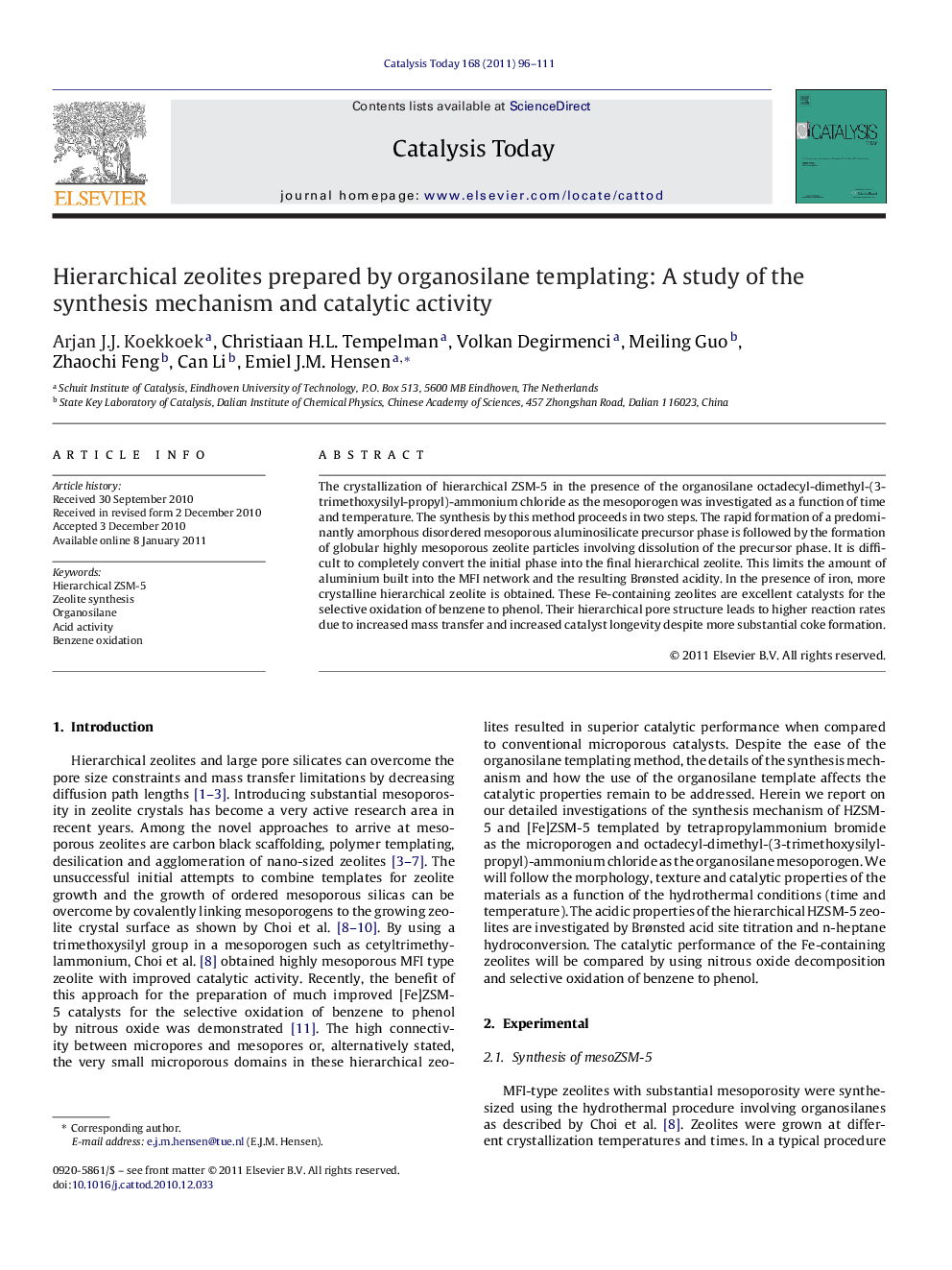| Article ID | Journal | Published Year | Pages | File Type |
|---|---|---|---|---|
| 56111 | Catalysis Today | 2011 | 16 Pages |
The crystallization of hierarchical ZSM-5 in the presence of the organosilane octadecyl-dimethyl-(3-trimethoxysilyl-propyl)-ammonium chloride as the mesoporogen was investigated as a function of time and temperature. The synthesis by this method proceeds in two steps. The rapid formation of a predominantly amorphous disordered mesoporous aluminosilicate precursor phase is followed by the formation of globular highly mesoporous zeolite particles involving dissolution of the precursor phase. It is difficult to completely convert the initial phase into the final hierarchical zeolite. This limits the amount of aluminium built into the MFI network and the resulting Brønsted acidity. In the presence of iron, more crystalline hierarchical zeolite is obtained. These Fe-containing zeolites are excellent catalysts for the selective oxidation of benzene to phenol. Their hierarchical pore structure leads to higher reaction rates due to increased mass transfer and increased catalyst longevity despite more substantial coke formation.
